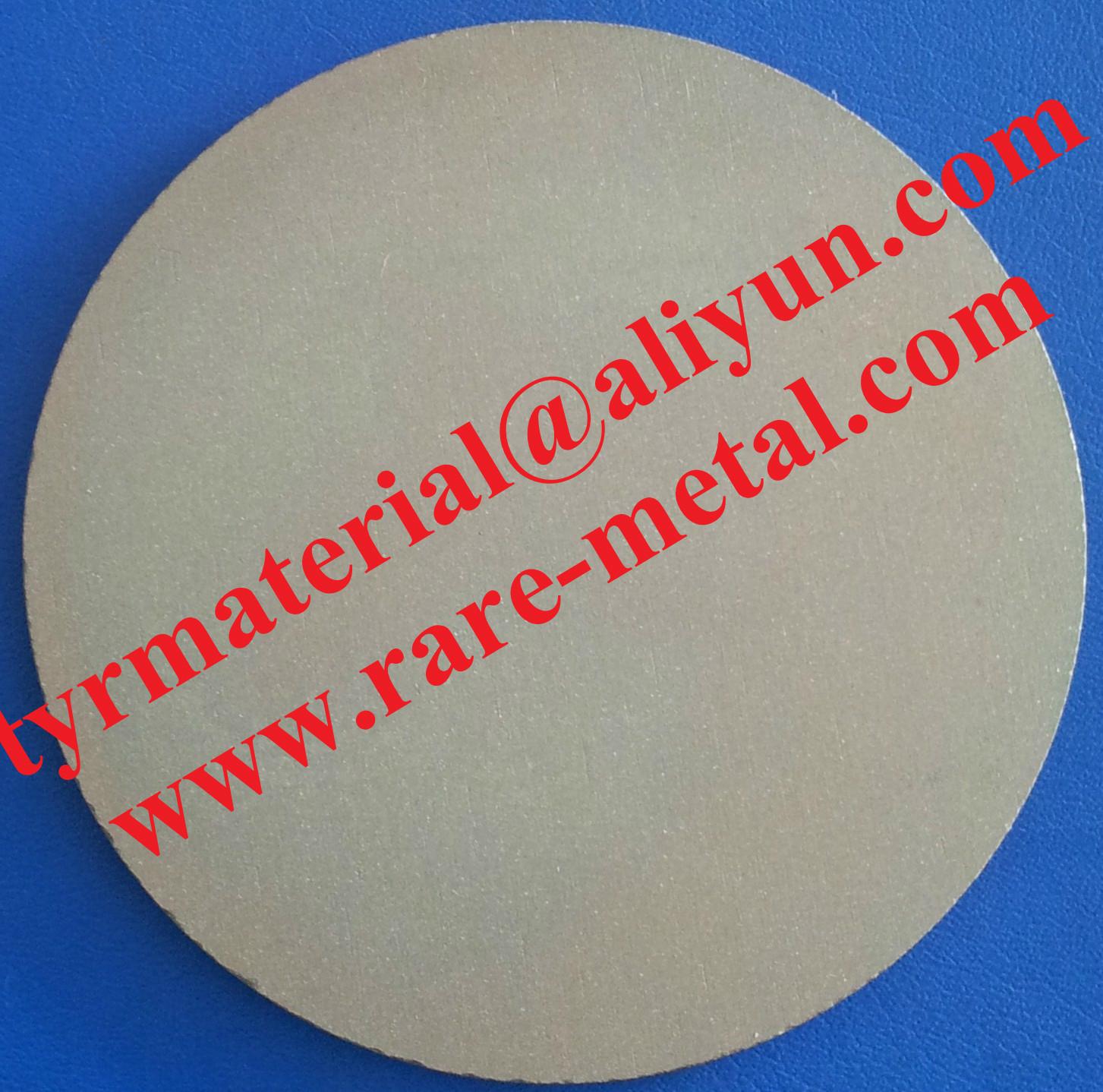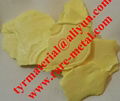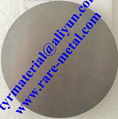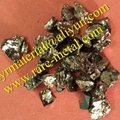
Zinc Telluride ZnTe sputtering targets use in Optoelectronics CAS 1315-11-3
Model No.︰
ZnTe
Brand Name︰
TYR
Country of Origin︰
China
Unit Price︰
US $ 200 / pc
Minimum Order︰
1 pc
Product Description
Zinc Telluride, ZnTe sputtering targets
Purity: 99.99%
Shape: Discs, disks, step disk, delta, plate, sheets or made per drawing
Diameter: 355.6mm (14") max.
Single piece Size: Length:<500mm, Width: <250mm, thickness:="">1mm, if larger size than this, we can do it as Tiles joint by 45 degree or 90 degree
Made sputtering targets method: hot pressing (HP), hot/cold isostatic pressing (HIP, CIP), and vacuum melting, vacuum sintering
Zinc telluride ZnTe is a semiconductor material with a direct band gap of 2.26 eV. It is usually a p-type semiconductor. Its crystal structure is cubic, like that for sphalerite and diamond.
Molar mass: 192.99 g/mol Density: 6.34 g/cm3 Melting point: 1,295 °C; 2,363 °F; 1,568 K
Applications:
Optoelectronics
Zinc telluride can be easily doped, and for this reason it is one of the more common semiconducting materials used in optoelectronics. ZnTe is important for development of various semiconductor devices, including blue LEDs, laser diodes, solar cells, and components of microwave generators. It can be used for solar cells, for example, as a back-surface field layer and p-type semiconductor material for a CdTe/ZnTe structure or in PIN diode structures.
The material can also be used as a component of ternary semiconductor compounds, such as CdxZn(1-x)Te (conceptually a mixture composed from the end-members ZnTe and CdTe), which can be made with a varying composition x to allow the optical bandgap to be tuned as desired.
Nonlinear optics
Zinc telluride together with lithium niobate is often used for generation of pulsed terahertz radiation in time-domain terahertz spectroscopy and terahertz imaging. When a crystal of such material is subjected to a high-intensity light pulse of subpicosecond duration, it emits a pulse of terahertz frequency through a nonlinear optical process called optical rectification.Conversely, subjecting a zinc telluride crystal to terahertz radiation causes it to show optical birefringence and change the polarization of a transmitting light, making it an electro-optic detector.
Vanadium-doped zinc telluride, "ZnTe:V", is a non-linear optical photorefractive material of possible use in the protection of sensors at visible wavelengths. ZnTe:V optical limiters are light and compact, without complicated optics of conventional limiters. ZnTe:V can block a high-intensity jamming beam from a laser dazzler, while still passing the lower-intensity image of the observed scene. It can also be used in holographic interferometry, in reconfigurable optical interconnections, and in laser optical phase conjugation devices. It offers superior photorefractive performance at wavelengths between 600–1300 nm, in comparison with other III-V and II-VI compound semiconductors. By adding manganese as an additional dopant (ZnTe:V:Mn), its photorefractive yield can be significantly increased.
We also supply below Telluride sputtering target material:
Arsenic Telluride , As2Te3 target
Antimony Telluride, SbTe, Sb2Te3 target
Bismuth Telluride , Bi2Te3, BiTe target
Bismuth Antimony Telluride , Bi-Sb-Te target
Cadmium Telluride, CdTe target
Copper Telluride , CuTe, Cu2Te target
Lead Telluride , PbTe target
Tin Telluride, SnTe target
Molybdenum Telluride, MoTe2 target
Niobium Telluride, NbTe2 target
Silver Telluride, Ag2Te target
Tantalum Telluride, TaTe2 target
Tungsten Telluride , WTe2, sputtering target
Zinc Telluride , ZnTe target




